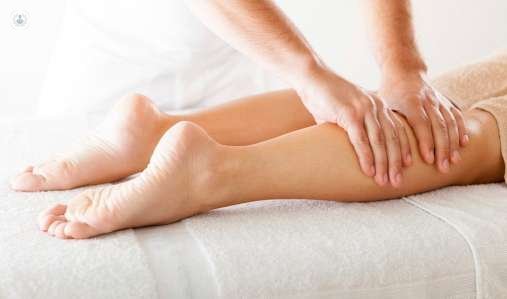What causes the appearance of a Lymphedema?
Written by:Lymphedema is a deficiency of the lymphatic system by which lymph does not flow properly and remains in the interstitial spaces of the subcutaneous tissue. As a result of this ruling increase the volume of the affected limb or body region in which the Lymphedema be produced.
There are two types of lymphedema:
- Primary lymphedema, which occurs when the ducts and / or lymph nodes of a zone have problems to transport large proteins and other molecules into the venous torrent. The most common appear in the lower limbs.
- Secondary lymphedema is due to the removal or radiation of lymph from a given area, hampering the normal lymphatic drainage. The most common, given the high incidence of breast cancer, those in the arm. One can also see a relatively high incidence in lower limbs for various surgical procedures, such as melanomas.
Symptoms of Lymphedema
The main symptom of lymphedema is increasing the size of the affected area. In the case of primary lymphedema tends to appear about 30-35 years, but can occur at any time of life spontaneously or with trauma that triggers premature start, as it can be a little sprain. In addition, it is accompanied by complaints such as heaviness, difficulty in mobility is increased depending on the volume, fibrosis in general or localized in some points, and it is common to be associated with vascular disorders.
Treatment of Lymphedema
Today there is no foolproof cure for lymphedema, only treatments that help slow the evolution and increase in volume and accompanying containment measures. The main treatment of lymphedema is lymphatic drainage. Although there are different schools, the best performer is the Godoy method, technique applied in the Fisiomédico Institute with great success for years with next to normalization member of the opposite results.
Godoy method for the treatment of Lymphedema
Godoy method is characterized by three phases:
- Cervical nerve stimulation
- Mechanical lymphatic therapy
- Manual lymphatic therapy
The global trend in the treatment of lymphedema is doing globally with a multidisciplinary team, how the unit Lymphedema the Fisiomédico Institute, where not only therapy but drainage diet, physical activity, psychology, workshops and alternative therapies work; this set makes treatment a success.

Sequels of Lymphedema
The consequences are varied Lymphedema. The main one is associated with the increased volume, which can be very limiting, especially in physical appearance, which sometimes reduces the use of certain clothes, or makes the person more reserved and reduce its activities social. On the other hand, throughout the day typically given heaviness the affected limb, so that physical activity is also reduced. In many cases those affected are granted work disability depending on the work they perform and whether it adversely affects the pathology, such as jobs that have to stand long hours in the case of lymphedema leg, or jobs manipulatives or gain weight in the case of the arm.
Lymphedema in breast cancer
In breast cancer one of the most common sequelae and increased incidence is the secondary Lymphedema. This does not mean that whenever there is a process of breast cancer need to be a Lymphedema as a result of it, with or without involvement of axillary nodes with subsequent surgical and radiation therapy and / or chemotherapy, in cases that require .
Whenever there is a surgical intervention at this level the risk of lymphoedema increases debute. Which is associated with chemotherapy or radiation therapy increases the incidence. Lymphedema can occur from the early stages of the disease, as the days of surgery until years after the treatment.
Secondary Lymphedema has a different approach to treatment because their causes are different, so in the Fisiomédico Institute (pioneers nationwide in oncological physiotherapy) face addressing this sequel cancer correctly.
Symptoms are presented above; usually begins with inflammation of part of the arm. This does not always follow the same pattern, there are patients who are inflamed first fingers and hand and arm rest it remains good, while others begins more proximal level. This tends to gradually evolve into a volume increase begins to be generalized to the whole arm and usually presents with fibrosis or hardness areas where lymph fluid is more stagnant.
Consequences of a failure of the Lymphatic System
The lymphatic system is part of the immune system, so that this failure is associated with increased risk for infections. It is important to good hygiene as a preventive measure and proper nail care, preserving the cuticles, do not get rings, bracelets or watches in the affected arm, not hang the bag on this side, and try to distribute the weight between the two arms.
In case the same thing happens legs, so the most important treatment in this case is prevention and exquisite care of the affected limb.
Once this infection using antibiotics and other drugs your doctor deems necessary depending on the type of infection you have it will be necessary.


